Home Expert AdviceSport Horse
Sport Horse
Expert advice
Our experts are here to help you with broad range of topics.
How do I prepare my horse for winter ?
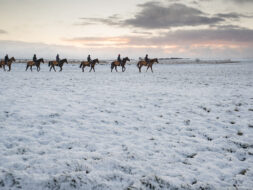
The longer nights, plummeting temperatures and wet conditions mean that caring for our horses is more challenging and takes a little extra effort. So ..
Laminitis and insulin resistance
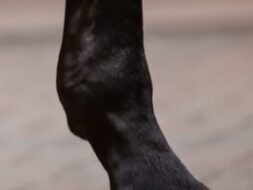
The thought of horses suffering laminitis is one that owners fear and dread; this fear is reinforced by the confusion surrounding the topic! We read..
Feed processing
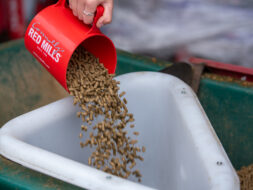
Some grains such as oats can be fed whole, others such as maize are likely to result in digestive problems if fed in their raw form. However, by pro..
Feeding the older competition horse

Feeding the older competition horse
Whether the target is the upcoming Olympics or the Riding Club championships there is a large proportion ..
Feeding for hoof health

A healthy hoof is the foundation upon which every horse stands. When viewing or purchasing a new horse, many well respected dealers and trainers will ..
Everything you need to know about starch
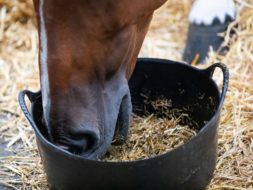
We are often bombarded with conflicting advice and opinions on starch. Do horses need starch at all? What is it and how does the horse digest it..
Learn about our experts and get in touch with your questions.
Frequently asked questions
Grass can provide horses that are at rest or in light work with sufficient calories, and even protein, to meet their daily requirements. However, even the very best grazing will not provide optimal levels of all the essential minerals. For example, horses at pasture, with no supplementary feed, can be deficient in both zinc and copper. This can result in problems such as poor hoof and coat condition. Horses that maintain weight easily on grazing alone will not need large quantities of concentrates and so a low intake, nutrient-rich balancer (i.e. Connolly’s Red Mills Performa Care or GroCare Balancer) is ideal. Horses in moderate to hard work have increased nutrient requirements. However, there isn’t sufficient capacity in the digestive system, or hours in the day, to consume enough grass to meet these requirements. Therefore, as workload increases, so does the need for concentrate feed. Feeding a suitable concentrate ration will ensure that horses in frequent work receive the additional calories, protein and micronutrients needed to support performance.
The best way to know how much a scoop of your feed holds is to weigh it! You can buy a spring balance or use kitchen scales. Put a scoop of your feed into a plastic bag and place it on the spring balance or the scales and weigh it accurately. As a rule, a scoop of cubes will weigh more than a similar scoop of mix. On average a round Stubbs scoop of cubes will weigh approximately 2.0kg whereas a scoop of mix will weigh approximately 1.5kg. These weights are only guidelines and will vary with the type of feed and whether you provide a level or heaped scoop. Weighing your scoop of feed is advisable in order to follow the manufacturer’s feeding guidelines correctly.
A horse’s diet should always be based on forage, whether fresh (i.e. grass) or preserved (i.e. haylage or hay). Most horses require between 2-3% of their bodyweight as dry food per day. If your horse needs to lose weight it may be necessary to restrict their total daily dry matter intake slightly. However, you should always speak to your vet before limiting your horse’s forage intake as, if not managed correctly, this can increase the risk of serious digestive and health problems.
Some of your horse’s daily ration will be provided as hard feed (concentrates), but ideally as much as possible should be forage. When calculating the amount of forage your horse needs, it’s also important to remember that even preserved forage contains some water, for example hay usually contains around 15% moisture, so 1kg of hay actually provides 0.85kg of dry matter.
As most horses are turned out for at least part of their day determining the exact amount of preserved forage they need, if any, can be difficult. As a guide, if your horse is never turned out, or is turned out only for few hours, then the entire forage portion of the diet should be provided as conserved forage. However, for horses that spend 50% of their time at grass, or that are permanently out on a semi-starvation paddock, this can be reduced by half.
When a horse has insufficient food the body goes into a state of negative energy balance. This can cause a metabolic disorder called Hyperlipemia. This is when the body tries to maintain the function of essential organs by releasing free fatty acids from its fat stores into the blood. Large amounts of fat circulating in the blood stream (hyperlipemia) causes other organs to fail (e.g. the liver and kidneys). Horses that are extremely overweight are those most at risk for hyperlipemia. The result is irreversible and often life- threatening.
Cushing’s Disease/ Pituitary Pars Intermedia Dysfunction (PPID) is considered a disease of ageing, where the control of several hormones, e.g. Adrenocorticotrophic hormone (ACTH), produced by the pituitary gland, is lost. This leads to excessive hormone secretion from a certain part of the gland (the pars intermedia, as in PPID), testing the levels of ACTH is one way of diagnosing PPID. Thirty-two percent of horses with PPID also have insulin resistance (IR), leaving them very vulnerable to developing laminitis. Although, the exact link between PPID and IR is not yet fully understood, but we do know that having both conditions will significantly increase the risk of laminitis.
Equine Metabolic Syndrome (EMS) is a group of symptoms not one specific disease. The more common symptoms include obesity (i.e. BCS of >3 out of 5), abnormal fatty deposits (e.g. a cresty neck), insulin resistance, and laminitis. Specific breeds or types, for example native breeds, appear more vulnerable to it than others. It’s important to note that not all overweight horses have EMS and EMS has also been found in horses with a healthy weight.
Molasses, a source of natural sugar, often, unjustifiably, gets a bad press. The majority of horse feeds do contain a molasses coating – this helps to bind the ingredients together, avoiding excessive fines/meal in the bag, and has the added bonus of enhancing palatability. Although in some situations, it may be necessary to limit the total amount of sugar and starch in the diet (e.g. for horses and ponies prone to laminitis), this does not mean that feeds containing a small amount of molasses are unsuitable. In fact many feeds containing molasses are actually low in sugar and starch for example, the total sugar content of our PerformaCare Balancer is significantly lower than would be provided by the same amount of hay.
Oats has fuelled working horses for generations, providing easily digested starch and oil. It is a grain that seems to ‘fit’ the digestive system of the horse the best. However, oats, when fed alone, are an unbalanced feed and will not provide the horse with optimal levels of several important micronutrients. Oats are low in calcium, but relatively high in phosphorus which can prevent calcium being absorbed. Oats are also very low in certain trace minerals including copper and zinc, which are all essential for healthy bone formation. Also, oats do not have a very good amino acid profile and so are not considered an adequate source of quality protein for horses in hard work and breeding stock. However, when oats are included as an ingredient in a full fortified mix or cube, or when they are fed alongside a suitable balancer (e.g. Connolly’s RED MILLS Oat Balancer Mix or Pellets) they will provide the horse with a highly digestible source of energy.
When horses sweat they lose vital water and salts (electrolytes) including sodium, chloride, magnesium, potassium and calcium. Prolonged sweating during exercise or travelling can result in dehydration and this can contribute to reduced performance, early fatigue, muscle cramping and other problems.
All Connolly’s Red Mills horse feeds contain an excellent electrolytes package. However, if a horse has sweated or is on a low intake feed (e.g. PerformaCare Balancer) then additional electrolyte supplementation may be required. Providing a salt lick or adding some common table salt to the feed should be sufficient for horses in light work. For horses that are working and competing regularly, a commercial electrolyte supplement will provide the range of electrolytes they need. This should be fed according to the manufacturer’s instructions and the horse should always have access to water.
For more information on electrolytes supplements visit www.foranequine.com
The hindgut of the horse has a microbial population that includes bacteria, fungi, protozoa and yeasts. These are present in the large colon and caecum in order to ferment and breakdown the fibre portion of the diet, which is resistant to enzymatic digestion in the small intestine. The fermentation of fibre in the hind gut produces volatile fatty acids (VFA’s) which the horse utilises for energy and also synthesises B vitamins which are essential to many physiological processes. Modern diets of performance horses often feature reduced fibre intakes and helpful aids to the microbial population in the hindgut can be useful. These additions are called prebiotics and MOS and FOS (Mannan-/fructo-oligosaccharides) are examples of these. MOS works as a pathogen binder and helps prevent undesirable bacterial species from colonizing the hindgut while FOS works hard to promote the growth of beneficial bacteria. Connolly’s Red Mills Horse Care range, including the Grocare and Performacare balancers, all contain MOS and FOS to help promote hindgut digestion in the performance horse.
We have 5 main low starch products: PROFIBRE range (PROFIBRE 10 & PROFIBRE13), CARE range (HORSE CARE 10 & HORSE CARE 14) and ENDURANCE MIX HI OIL. What are the main differences between these products? The protein level as well as the pre and pro biotic presence to support the intestinal flora and their richness in vitamins and minerals. All our products are cooked with cooking methods allowing gelatinization of starch which optimizes digestion.
Any quantitative or qualitative change in food must be made gradually. This allows the intestinal microflora to adapt gradually and prevents negative effects such as poor digestion and diarrhea. We advise you to make a gradual change over the duration of a minimum week.
Food allergies are part of "undesirable food reactions", as are food intolerances and food poisoning. These allergies are very rare and are difficult to detect. If food allergy is proven, the first step in treatment is to remove the allergen from the ration. Adding a source of omega 3 to the diet would influence the immune response, and therefore decrease clinical signs of allergy.
No allergy to sugar has been determined, however too large amounts of starch and simple sugars can cause the appearance of certain disorders, such as gastric ulcers, obesity ... To avoid the appearance of these dysfunctions, Scientists recommend "feeding" the intestinal flora with fibre and, again, limiting the intake of starch in the ration. In addition, it has been shown that the addition of probiotic yeasts can limit the phenomenon of acidosis. For horses with metabolic disorders (equine metabolic syndrome, certain cases of Cushing's disease, hyperlipemia, etc.) and insulin resistance, it is recommended to avoid excessive variations in blood sugar. It is therefore necessary to adapt the feed to each horse.
The addition of quality fat can be interesting for the beauty of the hair, joint support, digestive well-being, and the increase in energy intake without increasing the ration volume. However, the addition must be reasoned according to the initial ration plan and must be 5 to 7% of the total ration for racehorses and 10 to 12% for endurance horses or subjects suffering from metabolic disorders. Otherwise, you may experience palatability problems, storage (rancidity - storage in a dark and cool place) and laxative effect.
WSC are water soluble carbohydrates. Those include primarily sugars, both monosaccharides and disaccharides which are ethanol soluble carbohydrates (ESC) and all fructans.
NSC includes the sugars and starches, these are the carbohydrates that can be broken down by enzymes and absorbed from the small intestine into the blood stream as glucose and stored as glycogen in the muscles and in the liver. It is very important to NSC intake for the well-being and performance of horses. In fact, starches and sugars are required for energy and glycogen repletion but overload the digestive system with NSC can result in metabolic disturbances, which may lead to problems such as colic, laminitis (founder), obesity, or developmental orthopedic disease.
Dust is made up of many particles, called respirable particles which are so small in size that they can be inhaled deep into the lungs can cause the development of certain diseases. These particles are bacterial endotoxins, fungal spores, storage mites, pollens and other inorganic debris which can be the cause of hypersensitivity reactions, i.e. exaggerated immune reactions on contact. of these foreign substances and can induce tissue and inflammatory lesions of the respiratory tract. The two main pathologies developed are inflammatory airway disease called AID (Inflammatory Airway Disease) & recurrent airway obstruction called RAO (Recurrent Airway Obstruction). You can reduce the risk by soaking hay or steaming it.
Can diet influence broodmare fertility?

Broodmare management and optimal nutrition are both vital to a successful mating. A range of factors may negatively influence broodmare fertility, som..
Feeding the broodmare in early and mid-pregnancy

Understanding the mare’s nutritional requirements, and how best to meet them, is key for the health of both the mare and the developing foal.
When ..
Care of the maiden mare for breeding after racing

Preparing the maiden mare for covering can be a daunting task, getting both the practical and nutritional management of these mares right will be key ..
Expert Advice Breeding
Sales Prep Part 4: Behaviour and Temperament
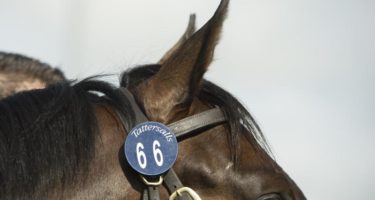
A well-developed and mannerly yearling will show themselves to their best with a flowing walk and workman like attitude. A purchaser will not be able ..






